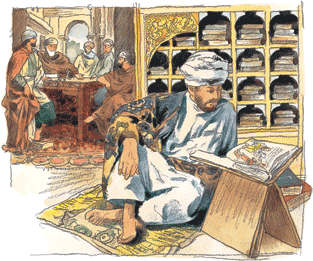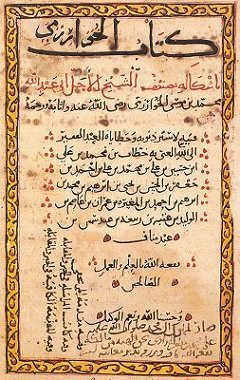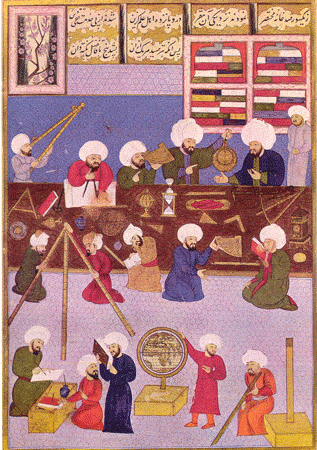House of Wisdom: Rise and Fall of the Ancient Library at Baghdad
While Europe was in the ‘Dark Ages’ from the 6th to the 14th century, another area of the world was shining bright – the Middle East.
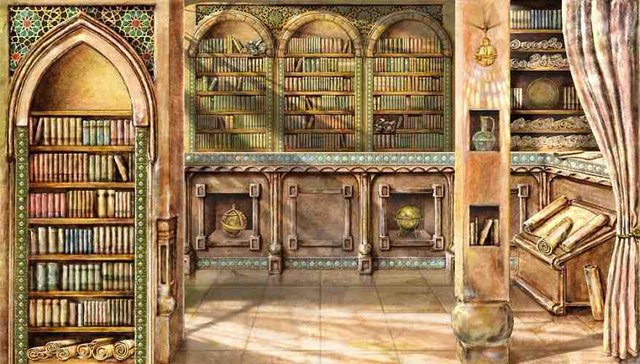
From the fall of Rome until the European Renaissance the Arab world was far and away the key holder and advancer of higher learning. One major center of this ancient knowledge was called Bayt al-Hikma, the ’House of Wisdom’. Founded by the Abbasid Caliph Harun al-Rashid sometime around 800AD, the House of Wisdom was a great library in Baghdad. Under al-Rashid’s son, al-Ma’mun, the capital was moved from Damascus to Baghdad and the House of Wisdom grew with his support. Al-Ma’mun saw the importance of the sciences and expanded the library to include one wing for each. Now it was an Academy (universities did not exist, knowledge was transferred directly from student to teacher without any formal surroundings), a place to translate works into Arabic, a building of learning, and a center for the birth and sharing of new ideas.
Works were translated from all languages, Greek, Hebrew, Aramaic, Latin, Farsi, Syriac, Sanskrit, and others. Hundreds of scholars worked daily to increase the collection of important books. A key reason for the growth was the invention of paper in China had reached Baghdad in 793AD. Now instead of costly parchment or mold susceptible papyrus, a cheaper and lasting material was commonly available. Baghdad built the region’s first known paper mill due to the demand from the House of Wisdom.
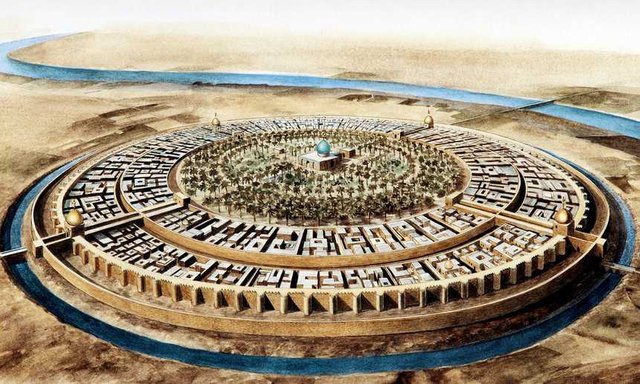
The middle east was at the perfect crossroads to obtain the ideas of both the western world and the eastern. Thanks to the silk road, Baghdad became rich off the tolls collected from traders, who also brought news and ideas. Growing rapidly, the city became the key center of the region. Strong in its military and economic power, it could afford a well establish scientific community. 9th century Arabic geographer and historian al-Y’qubi wrote Baghdad had “no equal on Earth, either in the Orient or the Occident” and “no one is better educated than their scholars”.
Thanks to its patronage and location in such a powerful city, the House of Wisdom became a major center of intellectual thought in not just the Arabic world, but a destination of scholars from all over. The pursuit of the sciences became a great focus in the Abbasid empire, and they good pay was a major draw for these scholars. Works from Plato, Ptolemy, Hippocrates, Aristotle and other well-known philosophers were requested from libraries near and far, such as the library of Constantinople. The books would be brought back to Baghdad and translated before being returned. By the end of the 9th century, it is estimated that the House of Wisdom contained more books than anywhere else in the world.
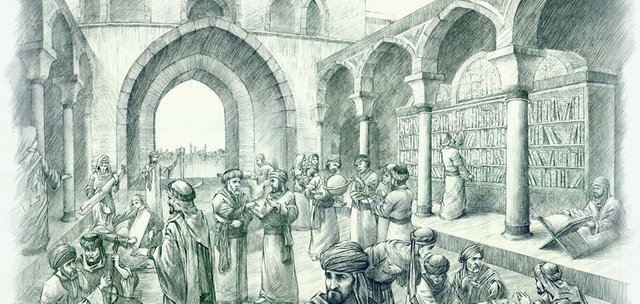
The good pay for translations led to a little bit of corruption. Hunayn was fluent in four languages and al-Ma’mun made him the head of the translation department – with a reported salary of the weight in gold of each book translated. So it was said that he used thick paper and large lettering with wide margins. One interesting tale is that algebra was invented in the House of Wisdom. In the 9th century al-Khwarizmi wrote his book of mathematics called ‘Book of Restoring and Balancing’, or in Arabic Kitab al-Jabr wa’l-muqabla. Al-Jabr --- algebra. He was also responsible for our word algorithm.
Another tale is that al-Ma’mun had heard of a grand library in Sicily, so he wrote to the King to ask if he could have all the books stored there. The Sicilian bishops told their King that the books were no good to the people of the ancient world, and so were no good to the people now. The king sent al-Ma’mun every book in the collection. It was said that it took 100 camels to carry them all back to Baghdad.
Since al-Ma’mun was so interested in the sciences he could often be found in the halls and lectures discussing the ongoing research. One of his favorite subjects was astrology, as the society of the times believed the planets and stars influenced events here on Earth. So he commissioned a great astronomical observatory to be built for the House, it was called Marsad Falaki. There the positions of the heavenly bodies were tracked and recorded.
For some 450 years the House of Wisdom collected and passed on knowledge to those who sought it. But on February 10th, 1258 it was destroyed forever. The Mongol Hulagu Khan (grandson of Genghis) and his army had besieged the city on January 29th of that year, and attacked on the 5th seizing a large portion of the defenses. The last Abbasid Caliph al-Musta’sim saw little hope of fighting them off, so he surrendered the city in exchange for the promise that the city and its cultural heritage not be destroyed.
Once the gates were open, the Mongols pillaged everything and killed nearly everyone.
They killed the Caliph’s court and almost his entire family (his youngest son was sent back to Mongolia and one daughter was taken as a slave and added to Hulagu’s harem). The Caliph was kept alive and made to watch the murders and destruction, it is said he was rolled into a carpet (they believed the blood of royalty touching the earth would offend the Gods) and trampled to death by Mongol horsemen. They looted, raped, and murdered the citizens. They killed the scholars and threw all the books into the Tigris river.
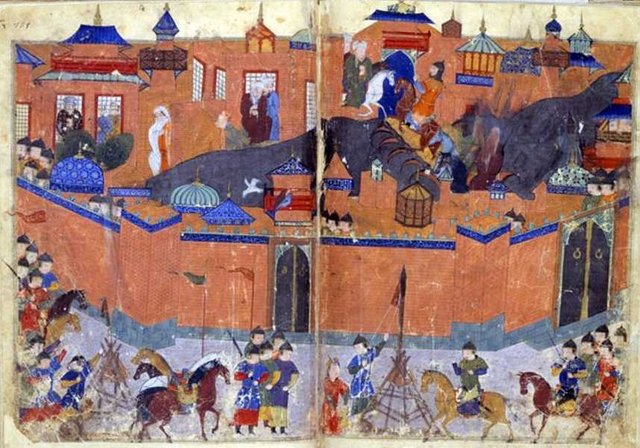
The story told is that the river flowed black and red for days, black from the ink and red from the blood.
The death toll was anywhere between 90,000 to 1 million. Hulagu repositioned his encampment upwind because of the stench of all the dead bodies.
Baghdad was a ruined city for hundreds of years afterwards, never regaining the status it once held. Its destruction was the beginning of the end of the Arabic golden age in sciences.
A man named Nasir al-Din al-Tusi managed to flee before the Mongols had arrived and he is reported to have saved 400,000 manuscripts by taking them to Maragheh observatory in present day Iran. Nasir then sought the protection of the Order of Ismailis Assassins and was captured by the Mongols after the fall of Alamut Castle in 1256 until he died in 1274.Over the course of its many years, the House was the birthplace of numerous ideas.
The engineers Ahmad and Hasan wrote a book of ingenious mechanical inventions, one was called the instrument that plays by itself - an early programmable machine. Mohammad Musa might have been the first to state the laws of physics were universal. Hunayn was a doctor who studied the eyes, and others wrote works on diseases, infections, and surgery that were the most detailed until the Italian Renaissance. Ibn al-Haytham loved astronomy and also studied the eyes as a way to improve optics.
